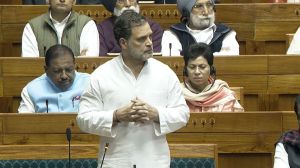Guwahati grapples with a heat wave like never before
Schools closed for four days in Guwahati; evening rain brings temporary relief
 At all of Assam’s weather stations, except Dhubri, the maximum temperature on Monday was more than seven degrees higher than normal, and this deviation was by as much as 8.9 degrees in Dibrugarh. (File Photo)
At all of Assam’s weather stations, except Dhubri, the maximum temperature on Monday was more than seven degrees higher than normal, and this deviation was by as much as 8.9 degrees in Dibrugarh. (File Photo)Many parts of Assam experienced their hottest-ever recorded September day on Monday, bringing an unusually long hot spell to its peak and prompting the closure of schools in Guwahati for four days.
On Monday evening, however, the onset of rain brought temporary respite.
While September is typically among the hottest months of the year in the region, scientists at the India Meteorological Department say that what sets this year’s heat spell apart from the usual is the duration, as well as the record-breaking temperatures.
On Monday, the state experienced record-breaking maximum temperatures in Guwahati at 39.3 degrees Celsius, Dibrugarh at 39.5, North Lakhimpur at 39.6 and Jorhat at 37.9. These were the highest-ever recorded September temperatures in all these stations. Shillong recorded a maximum temperature of 29.9 degrees for the third consecutive day on Monday, which is also its highest-ever September temperature.
In the wake of the record-breaking temperatures, the Kamrup Metropolitan District Elementary Education Officer, under whose jurisdiction Guwahati city falls, on Monday afternoon announced its decision to close all schools in the area for four days – September 24-27 – citing excessive heat and rising temperatures.
The order cited “various incidents of ill-health and fainting of students due to excessive heat and dehydration”. The soaring temperatures had already prompted the Karup Metropolitan district administration, along with that of other districts such as Barpeta, Cachar and Dibrugarh, to revise school timings and begin classes earlier in the day.
At all of Assam’s weather stations, except Dhubri, the maximum temperature on Monday was more than seven degrees higher than normal, and this deviation was by as much as 8.9 degrees in Dibrugarh.
Such deviations were also seen in other parts of the Northeast, with Meghalaya’s Shillong and Sohra seeing temperatures of 7.1 degrees and 9.3 degrees higher than normal, respectively. In Arunachal Pradesh’s Passighat, the temperature was 8.6 degrees above normal.
A scientist at the Regional Meteorological Centre explained that a number of factors could be behind the high temperatures: “The southwest monsoon is weak over the region, and there is no moisture incursion from the Bay of Bengal because of the lack of any favourable synoptic condition. Moreover, because there have been mostly clear skies during the daytime, there is higher insolation (the amount of solar radiation reaching the Earth’s surface).” Local factors such as deforestation and urbanisation in the region are also contributing to the generally rising temperatures.
The hot September comes after several parts of the Northeast experienced their hottest day ever in May, with maximum temperatures crossing 40 degrees Celsius.







